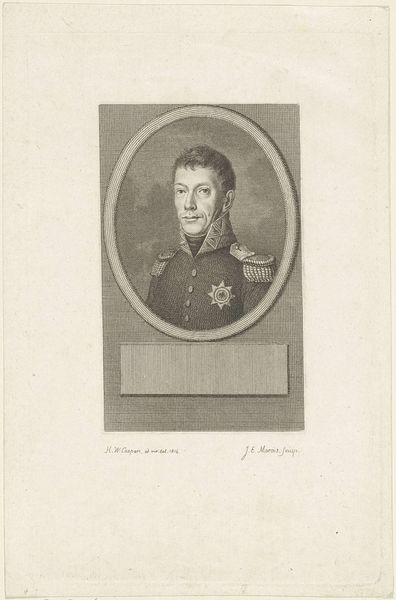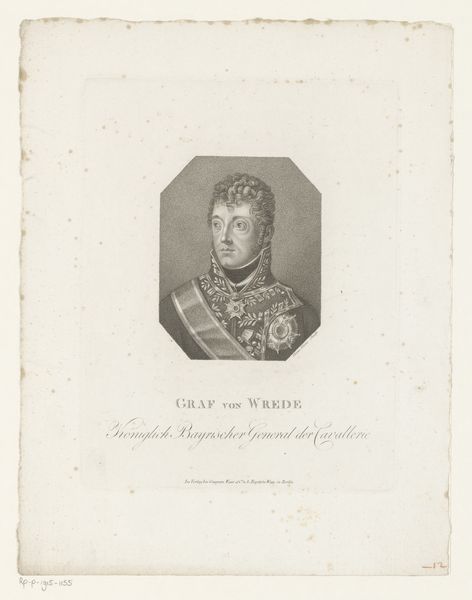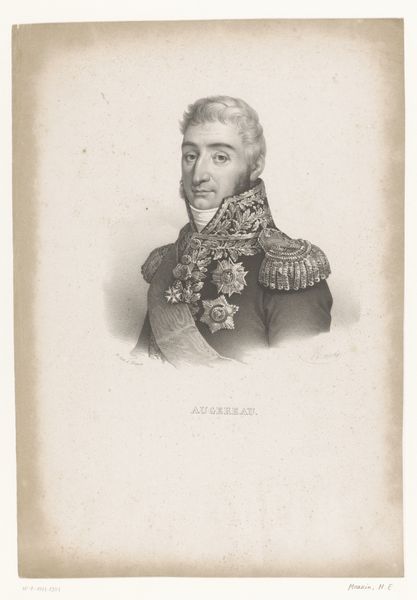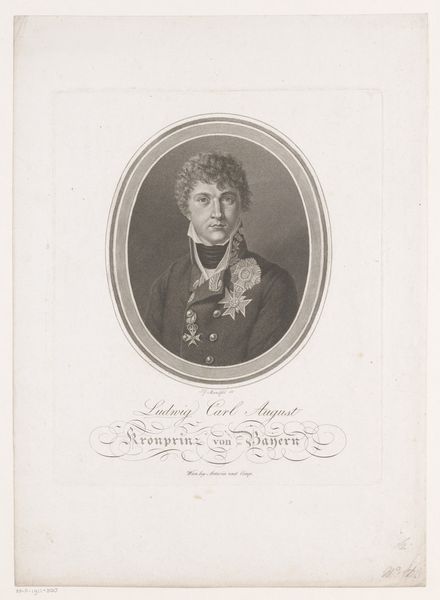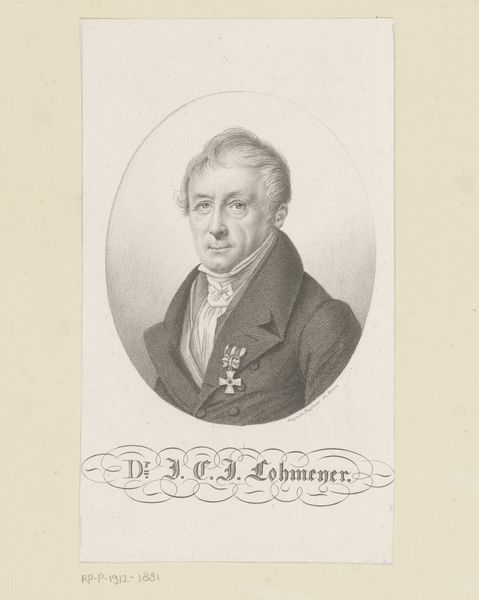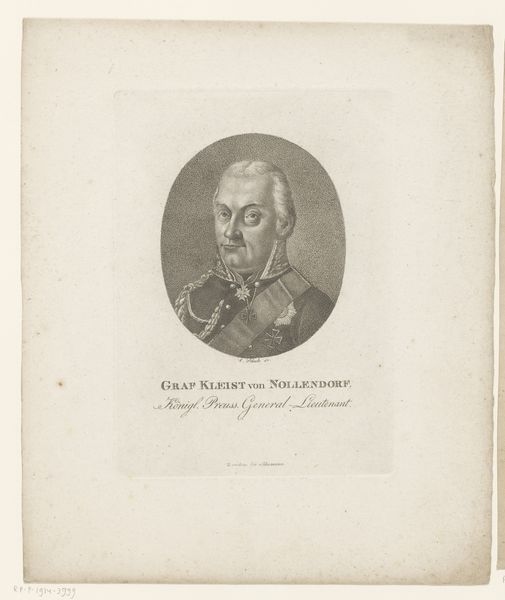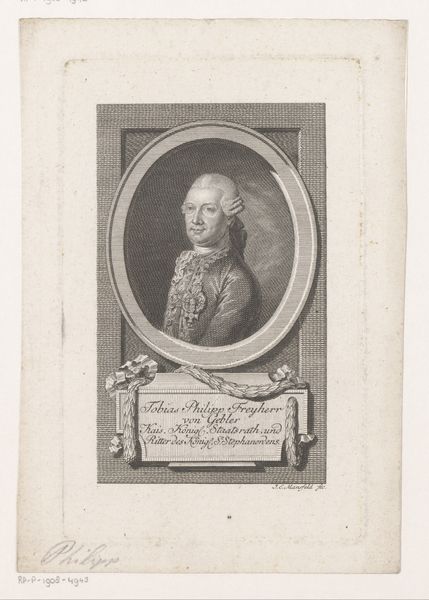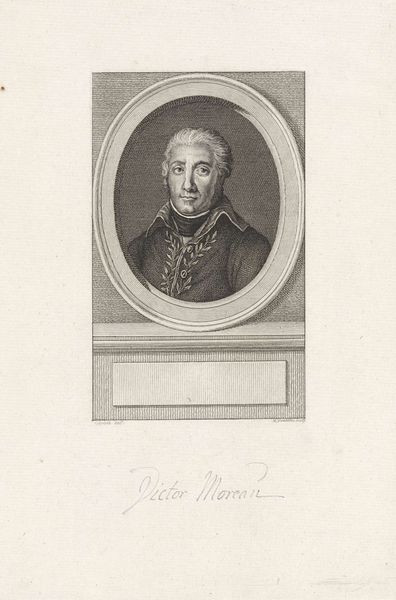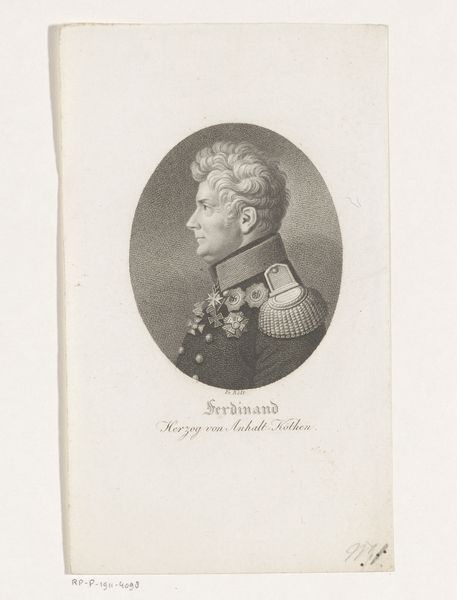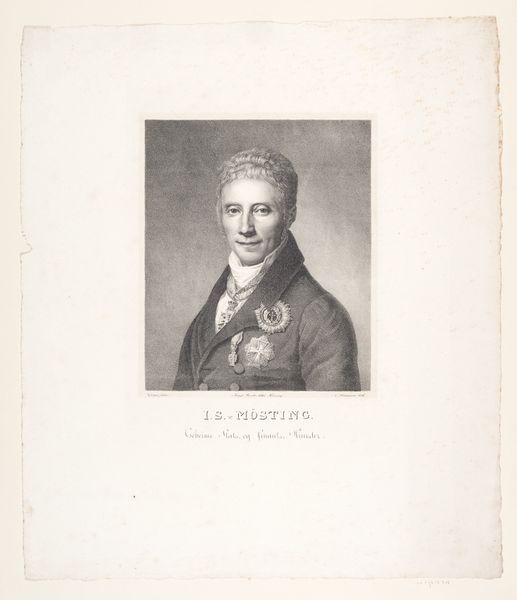
print, engraving
#
portrait
#
neoclacissism
#
light pencil work
# print
#
old engraving style
#
19th century
#
history-painting
#
academic-art
#
engraving
Dimensions: height 397 mm, width 300 mm
Copyright: Rijks Museum: Open Domain
Editor: This is a portrait, an engraving actually, of Pedro Josè de Meneses Coutinho. It looks like it's from somewhere between 1793 and 1847 and was created by Charles Simon Pradier. It feels very formal and regal to me. How do we unpack the historical significance of a piece like this? Curator: Absolutely. Consider the era and the subject's status. The piece, reflecting Neoclassical style and academic art, tells us much about how power was presented and consumed. He's not merely a man; he is D. Pedro de Meneses, Marquez de Marialva. The visual emphasis becomes the symbolic role he played as Ambassador. How does the choice of engraving as a medium shape the image's distribution and its role in solidifying political imagery? Editor: That’s interesting. So the printmaking medium made it more accessible, a deliberate choice to disseminate his image? Curator: Precisely. Engravings were easily reproduced, facilitating wider distribution and reinforcing a desired public image. Note the inclusion of his coat of arms. This visual language creates a very specific message. It begs the question: what audience was this intended for, and what narrative were they meant to absorb? Editor: I hadn’t thought about the audience being so carefully targeted. It makes you wonder about the politics behind the portrait itself. Curator: Exactly! It serves not only as a representation of an individual but as a carefully crafted statement reflecting his social standing, political power, and historical narrative. How does this perspective influence your initial reaction to the work? Editor: I see it less as just a portrait and more as a piece of political communication from the period. Curator: Precisely! Understanding this blend enriches our understanding of this work and its time. Editor: I will never look at a portrait the same way!
Comments
No comments
Be the first to comment and join the conversation on the ultimate creative platform.
